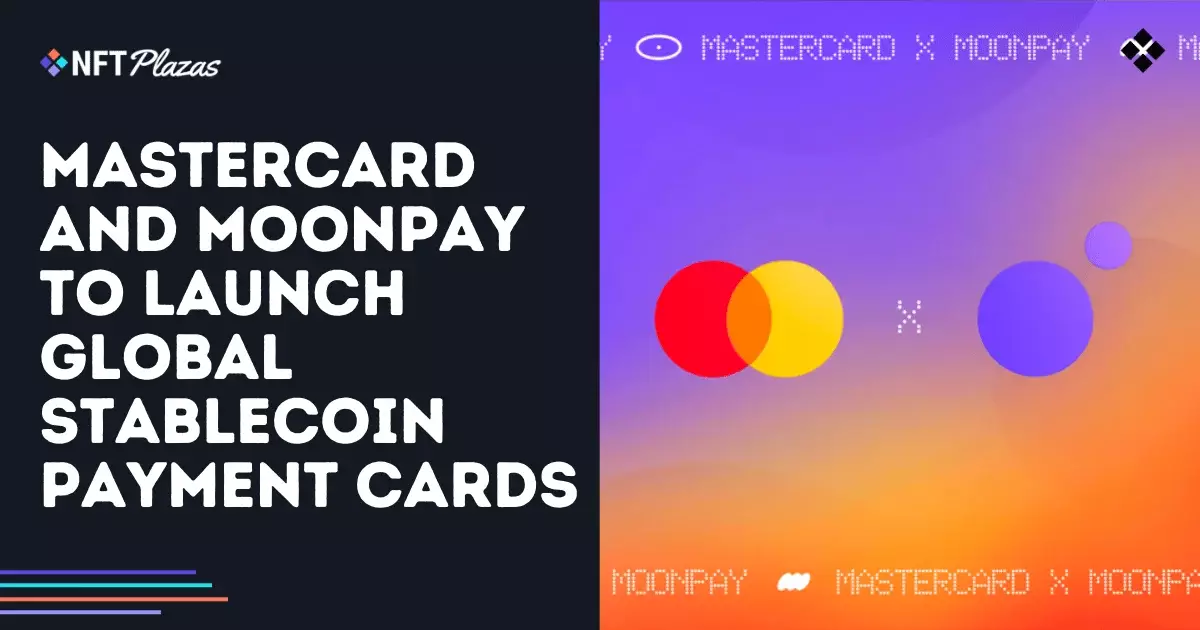In an era where digital currency is becoming mainstream, Mastercard’s recent collaboration with MoonPay is a significant leap forward in the cryptocurrency payment sector. This partnership promises to revolutionize how consumers and businesses engage with stablecoins, which are often seen as a safe harbor amidst the volatile sea of crypto markets. Critical to this evolution are not just the entities involved, but the underlying technology that will facilitate seamless transactions.
Stablecoins: The Bridge Between Cryptocurrencies and Traditional Finance
Stablecoins like USDC and USDT, pegged to traditional currencies, serve as a vital link between the often tumultuous world of cryptocurrency and the established financial systems. Mastercard’s decision to offer payment cards that utilize stablecoins is a game-changer, as it unravels the complexities associated with crypto wallets and market fluctuations. By converting stablecoins to fiat currency at the point of sale, the service eliminates the steep learning curve that has kept many potential users at bay. This innovation signifies a move toward a more user-friendly financial ecosystem, appealing to non-tech-savvy consumers who have hesitated to enter the crypto space.
Mastercard’s Position in a Competitive Market
Mastercard isn’t the only player in this space; Visa is also exploring similar avenues with pilot programs across Latin America. The competition is fierce, but Mastercard’s strategic partnership with MoonPay—leveraging the technical capabilities of Iron—could afford them a unique advantage in building a robust infrastructure for stablecoin transactions. The speed at which financial giants are adapting to stablecoins indicates a burgeoning belief that these digital assets are not merely a trend but the future of payments.
Legal Gray Areas and Regulatory Implications
Despite the positive strides, the legal environment surrounding stablecoins is still murky. The SEC’s uncertainty regarding the regulatory status of stablecoins, especially algorithmic and yield-bearing types, casts a shadow over the industry. As payment networks like Mastercard and Visa embark on these ventures, the lack of clear guidelines could pose challenges in the long run. The need for comprehensive regulation in this burgeoning market cannot be overstated; adapted policies will be essential in fostering innovation while also protecting consumers.
The Bigger Picture: Financial Inclusion and Accessibility
This drive toward integrating stablecoins into everyday transactions underscores a larger narrative of financial inclusion. By simplifying the transaction process, Mastercard and MoonPay are not just catering to tech-savvy individuals but are aiming to democratize access to digital finance. In regions with less developed banking infrastructure, stablecoin adoption can prove transformative, providing people with financial services that were previously out of reach.
Mastercard’s endeavor into stablecoin payments, albeit accompanied by the challenges of unregulated spaces and fierce competition, represents a significant step toward a more integrated future of finance. The company’s commitment to leveraging stablecoin technology could very well shape how we perceive and utilize currencies in the years to come.

















Leave a Reply